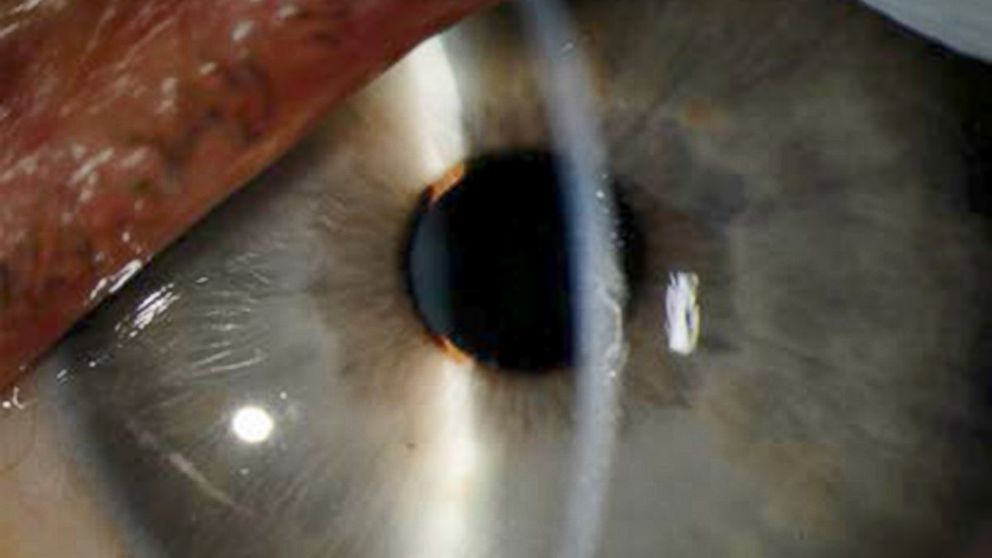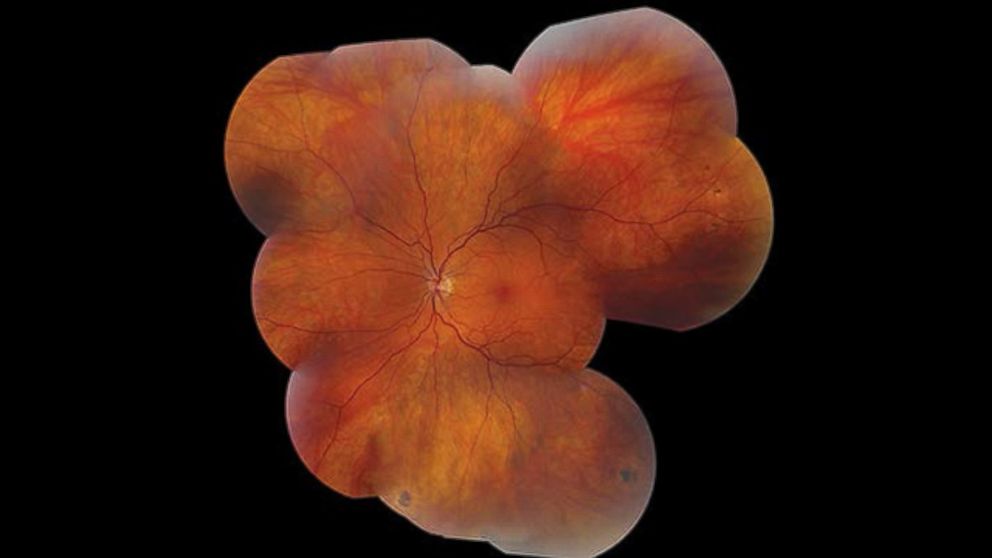Ebola Virus Lingers in Patient's Eyeball Even After Recovery, Study Says
An Ebola doctor-turned-patient had virus in his eyeball months after recovery.

— -- For one Ebola doctor-turned-patient, being discharged with virus-free blood wasn't the end of his brush with the potentially deadly pathogen.
Three months later, the virus was still lingering in his left eyeball, according to a case study published this week in the New England Journal of Medicine. The infection baffled doctors when it turned his blue eye green until the infection resolved itself, according to The New York Times. Emory Eye Center said it was not able to provide the photos to ABC News.
The patient was a previously healthy 43-year-old man who was working at an Ebola treatment ward in Sierra Leone when he was diagnosed with Ebola in early September, according to the study. He was flown to Emory University Hospital in Atlanta for treatment, where he spent 12 days on a ventilator and 24 days on dialysis.
About nine weeks after the patient's blood and urine tested negative for Ebola, he complained of redness, blurred vision, sensitivity to light and pain in his left eye, according to the study. He was diagnosed with inflammation of the eyeball and tests revealed active virus inside the eye. The virus wasn't present in his tears, however.

Though he's not named as the patient in the case study, The New York Times identified the man as Dr. Ian Crozier, who had been Emory's unnamed Ebola patient until December when he revealed himself to the Times. Crozier is named as a study author in the New England Journal of Medicine study about his eye.
"He's a full partner in his own investigation and the other investigations going forward," said Dr. William Schaffner, chairman of preventive medicine at Vanderbilt University Medical Center in Nashville, Tennessee, who said he was one of Crozier's mentors. Crozier did his training at Vanderbilt and spoke on its campus about Ebola in April. "All of this is in the context of his sense of mission and being devoted to the medical care of people in underprivileged circumstances abroad."
Crozier is back in Africa to study the health effects on patients after Ebola, Schaffner said.
Schaffner said Ebola is known to cause eye problems and even blindness in patients in Africa. The eye is somewhat cut off from the rest of the immune system, which could have led the virus to linger there, he said.
Treatment and the body's immune response eventually allowed the patient's eye to begin to resolve, Schaffner said, but his remaining Ebola-related health problems also include lower back problems.
There were 26,312 Ebola cases as of April 26, including 10,899 deaths, according to the study, citing World Health Organization figures. Although it's been the largest Ebola outbreak in history, it's also produced the largest number of Ebola survivors, according to the study.
"All of these long-term consequences of Ebola infection in survival are now only beginning to be documented, and he wants to be part of that because he sees these people now entering into a post-Ebola world," Schaffner said of Crozier.




